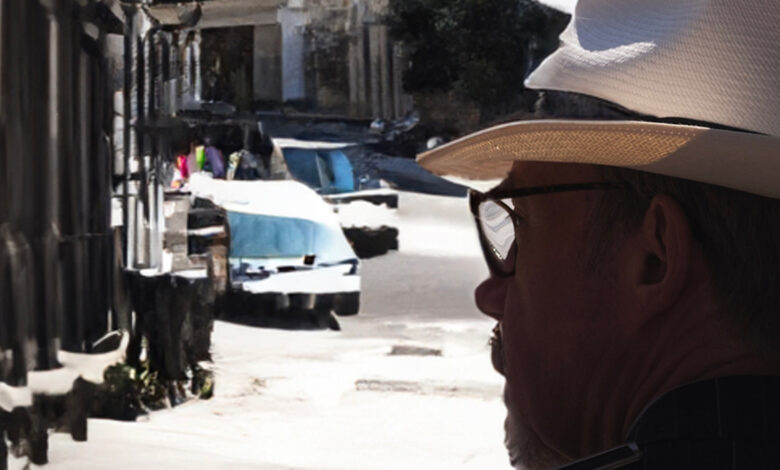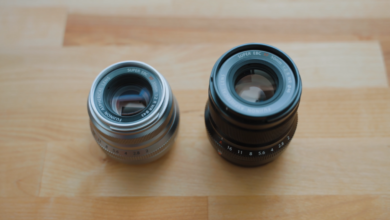The AI ‘Photography’ Race Is Getting Hilarious: Enjoy The Show

AI is the perfect hype commodity for tech companies and social media shills. If you thought NFTs and crypto cults were full of hot wind, then strap yourself in for the AI movement, because it’s bigger, gassier, and truly inescapable.
Luckily, the hype around AI “photography” is at least good for a laugh, so we may as well enjoy the show.
AI Will Destroy Everything You Love, But Not How You Think
Earlier this week, hundreds of AI industry leaders warned that artificial intelligence could wipe out the human race. A joint letter insisted that “mitigating the risk of extinction from AI should be a global priority alongside other societal-scale risks such as pandemics and nuclear war.”
Now, I’m not disagreeing with this. But it always makes me chuckle when the industry talks about AI as if the algorithms are the threat. You know, instead of warning society about its increasing dependence on hackable technology or irresponsible developers writing code that basically says “kill all humans”.
Terminators won’t destroy the human race but hacked or poorly-written algorithms could, say, starve us if we’re dumb enough to make food production reliant on them.
Either way, AI will destroy everything you love long before anything like this happens.
Again, it won’t be the algorithms that do the damage, though. Instead, it’ll be the AI tech bros forcing the AI narrative into every aspect of our lives, incessantly overpromising and underdelivering while the technology itself progresses at a relatively slow rate. We’re already seeing this in photography and, basically, every creative industry.
Each week, a new AI revolution is announced, and we’re told the future is finally here. Then, the latest AI toy falls apart under the first round of genuine scrutiny, like the recently botched rollouts of Google, Bing and every other company clamouring for relevance in the age of AI.
It’s the hype that matters, though, not the results. In fact, the majority of gains in the stock market this year are attributed to AI enthusiasm. As we’ve seen with cryptocurrencies, NFTs and even content monetisation in the digital age, it’s the enthusiasm that’s profitable.
Welcome to the hype economy.
Adobe Enters the AI ‘”Photography” Race
Adobe has officially entered the generative AI race with its beta feature, Generative Fill. It’s the newest shiny toy in the AI hype machine, and the usual suspects are out in force with typical overenthusiasm. Search “rip photographers” on Twitter, and you’ll get an endless stream of tweets that all use the same hyperbolic phrasing.
I mean, half the tweets are identically worded, and they’re all sharing the same examples. But who cares about originality, anyway?
Here’s a word-for-word template being shared by countless accounts:
RIP Photographers
RIP Designers
RIP Retouchers
Even Midjourney is in trouble now…
The hype is real. 🤯
All of the best threads on Adobe Generative Fill on Twitter. 👏
Be sure bookmark & share!
The hype certainly is real.
If you’re familiar with the NFT hustle of recent years, you’ll recognise most of this language. In fact, a quick scroll through the comments on many of these threads reveals a mix of overexcited journalists and active or former crypto bros (plus a healthy amount of ridicule from creatives).
I’m not embedding any of these tweets because I don’t want to promote them and, secondly, they all use artwork without permission, something else I don’t want to contribute towards.
They are good for a laugh, though. So, I’ll share the AI-generated content they’re (not) producing – that nobody can own any rights to. Maybe you can guess which pieces of original artwork have been used – without permission – to generate these expansions.
Expanding Images With Adobe’s Generative Fill
Aside from having a bit of fun, it’s always worth taking an honest look at features like Adobe’s Generative Fill tool. As hilarious as the AI tech bros are, we all need to keep tabs on the capabilities and limitations of artificial intelligence. It’s not only a question of whether they’re a threat to creatives but also how useful they may be in helping us do our jobs.
For the most part, they’re simply taking existing pieces of artwork and using Photoshop to expand them. The first example of this I saw was someone expanding the Mona Lisa painting. Essentially, we’re just getting a lot more of the same.
Can You Guess the Iconic Album Cover?
When you run out of famous paintings to butcher, I guess album covers are the obvious next step. So, let’s see what our pioneering artists have come up with using Adobe’s Generative Fill tool.
Can you guess which iconic album cover was used to generate this expansion?

This is a particularly interesting example. Aside from being one of the most famous album covers of all time, it’s also one of the most controversial regarding usage rights. The original photo used for this cover featured a naked baby in a pool of water, appearing to swim towards a $1 bill on a fishing line.
At the age of 31, Spencer Elden – aka: “The Nirvana Baby” – filed a lawsuit against the use of the image on the basis he was unable to give consent.
In terms of how well Adobe handles this, the original photo is about as easy as it gets for generative AI. Firstly, it’s a low-resolution image taken underwater, but, more importantly, it includes no lines of high-definition detail.
Anyone experienced with Photoshop’s intelligent fill tool will understand why the original image is a perfect choice for Generative Fill. Sadly, this seems like a classic case of beginner’s luck.
Next up, we could be talking about the most iconic album cover of all time and a more complex image for Adobe’s Generative Fill tool to expand.

Hopefully, the zebra crossing is the giveaway clue for this one. All you have to do is imagine the UK’s four most famous musical exports crossing a particular road.
Clearly, there are a lot of issues with Photoshop’s output here. It almost looks like the algorithm has merged images from Google Maps’ street view, creating all kinds of bizarre distortion.
Whoever created this prompt doesn’t seem to mind the car on the left completely mismatching an image taken in 1969. Who cares about details when you can add a blimp in the sky and take all attention away from the four original subjects of the image, though?
All of this aside, the real victim here is the poor dog to the right of the expansion.

Thoughts and prayers for our one-legged (?) friend.
Can You Guess the Famous Meme?
Moving further away from iconic paintings and album covers, memes are also getting the Adobe Generative Fill treatment.
This was created using a meme commonly referred to as “distracted boyfriend.” It depicts an apparent couple with the boyfriend gawking at a passing lady in a red dress, much to the dismay of his unimpressed girlfriend.

The girlfriend’s gaze is firmly locked on the back of her boyfriend’s head but it appears she has bigger problems to worry about.

I’m no doctor, but that looks like a medical emergency to me.
You only have to look around the frame of the original image to see a whole bunch of issues with this expansion.

You can also see where Generative Fill is having problems when it tries to merge multiple images together. The tool is clearly trying to merge multiple images of buildings to match the edge of the frame in the original photo. Again, nobody experienced with Adobe’s Content Aware tools will be surprised by the issues with lines and details.
These examples are supposed to demonstrate the capabilities of Generative Fill and AI tools in general. However, all they really do is reveal the lack of knowledge and attention to detail of anyone praising the results. By extension, they show how important it is that AI tools are used by experts who actually know how to use them.
In this case, photographers, photo editors, and digital artists.
Adobe’s Generative Fill feature is still in beta, which means it could improve somewhat before any official release. Don’t expect miracles, though, because beta releases are pretty deep into the development cycle for software products. In other words, Adobe must either be fairly happy with the results or in a real hurry to get its name in the generative AI discussion as quickly as possible.
You can try Generative Fill out for yourself by downloading the latest beta version of Photoshop from the Adobe website. You also sign up for a free trial to test Generative Fill, even if you’re not an existing Photoshop customer.
Funnily enough, Adobe isn’t promoting the feature as a tool for expanding paintings or album covers in its marketing material. In fact, the first demonstration in the video below is a reasonable use case for the tool. The video starts with a creative adding yellow road lines to an image of a cyclist riding on a remote road.
The creative, then, uses the tool to add more sky to the top of the image, converting the 1:1 image into what looks like a 2:1 composite.
To be honest, the sky doesn’t match all that well to my eyes, but maybe that’s just the bias of knowing it’s AI-generated.
Unfortunately, the video descends into madness from here, placing stags in cartoonish streets and turning a legitimate landscape image into a composite mess. I can’t be the only one getting heavy macOS Sierra flashbacks from these AI-generated mountains.

Adobe is telling us to “dream bigger” in this promo video, but the botched reflections, unrealistic lighting, and clip art signs are the stuff of nightmares. Based on this video, it also seems like Adobe’s Generative Fill feature isn’t as generative as Adobe would like us to believe. When you ask it to add a reflection, you can tell it tries to use the data in your existing image.
However, when you add completely new elements or change entire backgrounds, you often end up with recognizable mountain ranges or streets. Compared to tools like Midjourney, it looks like Adobe’s algorithm is using less data (fewer images) to generate content.
The good news for Adobe is that increasing data volume should, in theory, improve the results of its output. In fact, this is the only way companies like OpenAI and Adobe can realistically improve the quality of their AI products using the current technology available.
A more significant jump in AI capabilities will require a new technological breakthrough of some kind.
How Useful Is Generative Fill for Photographers?
Adobe’s Generative Fill tool will improve with time, but I can already see some legitimate use cases for photographers and other creatives. Obviously, digital artists that don’t need realism in their work have the advantage here.
The use cases for photographers will always be more limited, though. As the technology improves, it will only get easier to remove unwanted elements from an image. You can already imagine publishers asking photographers to switch out the sky on an image, rather than waiting an unknown period of time for better weather conditions.
Personally, I have no interest in using generative AI for photography, but I still test every tool I can get my hands on. Quite simply, I want to know what they’re capable of and what they’re not.
To test Adobe’s Generative Fill, I went through a bunch of rejected photos and selected this raw file of an image taken in London last year.

I selected this image because it seems like a good candidate for using Generative Fill to expand the left side of the frame. Most of the image is shadow and light with almost no detail, except for the pattern on the window, which will help demonstrate the tool’s capabilities with details.
This is the most convincing version Generative Fill produced:

At a glance, it’s done a decent enough job until you notice the smeared patterns on the generated parts of the window. In all honesty, casual viewers would probably never notice this.
So, if I desperately wanted to expand this kind of image to 4:5 and fill the left side of the frame, maybe Generative Fill is a viable option. Even still, I think I would reject such an image on the basis that I should have composed it better in the field.
Also, keep in mind I specifically chose this image because I knew it would be relatively easy for Generative Fill to work with. Aside from the pattern on the window, there is no detail required in the expansion at all.
Once you start replacing backgrounds or anything major, results quickly get messy.
For example, here’s the original version of an image I took during a rare daytime shoot in London:

So, what happens when I ask Adobe to swap out the background for a street in Paris on a sunny day?
Well, after three failed attempts to cleanly select the subject with Photoshop’s AI tools, I had to do it manually with the good, old-fashioned quick select tool. Then, I inverted the selection, hit the Generative Fill button and typed the prompt: “A street in Paris on a sunny day.”
This is the most convincing of the three generations Adobe’s tool came up with:

You can see how it’s trying to recreate the perspective of the original image, but the result is a complete mess. You can see in the bottom-left of the frame how much the algorithm has struggled with detail, and this crop from another alternative is even worse.

Let me be clear, though, I would never expect good results from a tool like Generative Fill for this kind of application. The first test, where I slightly expanded an image with no detail, is the kind of task that’s suitable for current AI tools. Switching out backgrounds and expecting quality or realistic results is going to end in disappointment.
All in all, Adobe’s Generative Fill tool is one of the least impressive AI tools I’ve tested from major providers. It will get better with time, but this rollout feels rushed. I get the sense Adobe wanted to release an AI tool as quickly as possible to put its name in the mix.
And, honestly, the quality of its output doesn’t really matter because it’s the hype that bolsters stock prices, not the technology itself.
The Hype Will Die Down, Eventually
Soon enough, the market will be saturated with AI tools, and the hype will start to die down.
The mist surrounding AI technology will gradually clear as people’s understanding of it increases – not so much the technical aspects, but the experience of using it. AI will change the way we work and live our lives, but the current technology isn’t putting us on the verge of revolution.
Tech companies are exploiting the public’s limited understanding of AI technology and the media’s predictable sensationalism for quick profits. The dishonesty will become less profitable as people’s experience and understanding of the technology increases and the narrative in the media has to change.
The hype will die down, but it’ll take longer than the NFT craze that swept photography in recent years. AI isn’t a niche movement; it’s already entrenched in every aspect of our lives – at home, at work, and almost everywhere we go.
So, we’re going to have to put up with a lot more hot wind from the AI tech bros every time a new product or feature hits the market. All we can do is sit back, have a good laugh, and enjoy the show.




